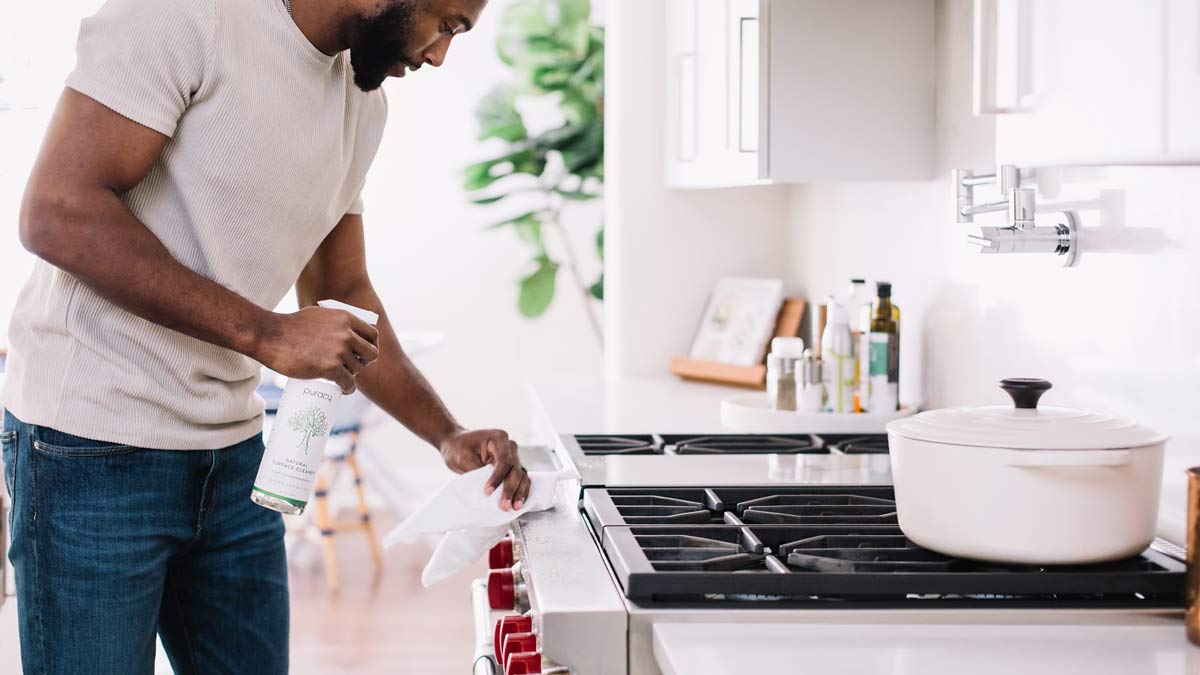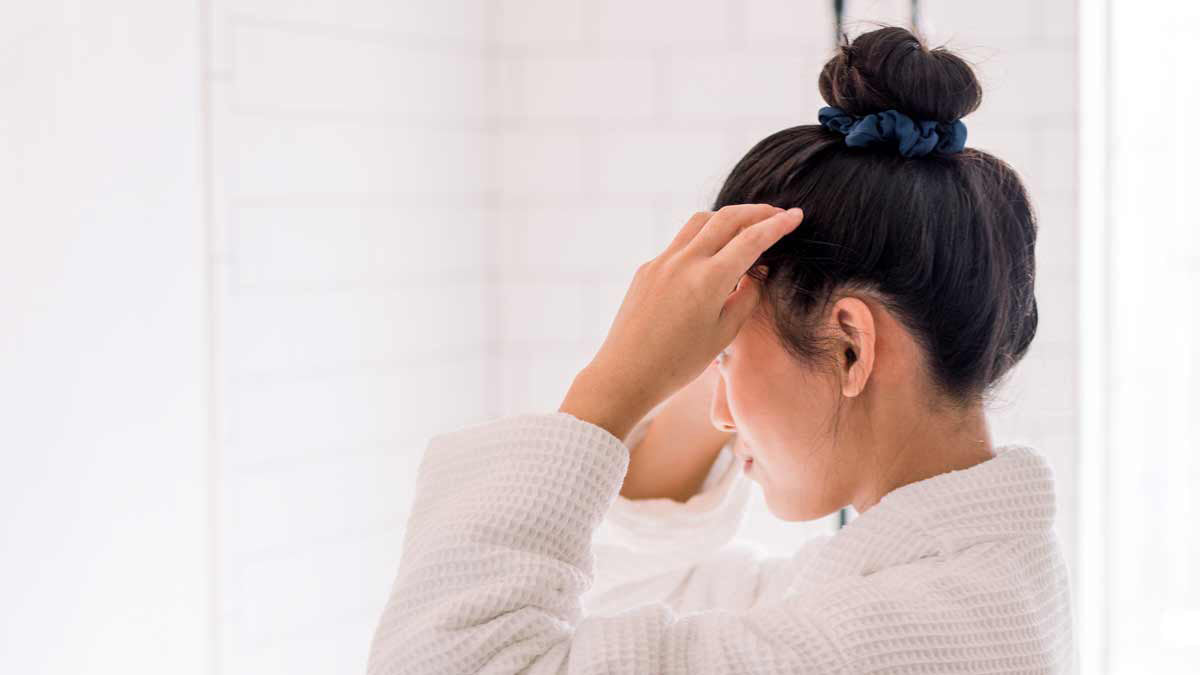
How to Clean the Dirtiest Places in Your Home
Written by Tenley Haraldson.
Wondering how to get rid of germs in the house? First, you need to determine where the dirtiest places in your home are, and then you need to have an arsenal of Puracy's natural bacteria killers.
What Are the Most Common Household Germs?

From stomach bugs to listeria to E.coli, even the cleanest home harbors invisible microbes that can potentially cause mild and serious illnesses. One analysis of 30 different “high-touch” spots found 340 different types of germs including:
- Campylobacter - foodborne illness that causes nausea, diarrhea, and vomiting
- Clostridium difficile (C. diff) - bacteria causing diarrhea and colitis
- Methicillin-resistant Staphylococcus aureus (MRSA) - an infection caused by a certain strep bacteria
- Escherichia coli (E.coli) - certain strains of this bacteria can cause serious abdominal illness
- Salmonella - bacteria that can cause fever, diarrhea, and stomach cramps
- Staphylococcus aureus (Staph) - a germ most people carry. In some cases, it can lead to sepsis, pneumonia, and other serious illnesses.
- Streptococcus (Strep) - bacteria causing a host of illnesses from strep throat to scarlet fever, and pneumonia
Keep New Pathogens Out

In addition to disinfecting your belonging like keys, laptop cases, handbags, and even takeout meals:
- Take your shoes off outside, spray them with a disinfectant, and store them in an entryway/mudroom.
- If you’re a frontline worker, get rid of biofilm on clothes by immediately throwing them into the washing machine.
- Take a shower ASAP and require mandatory bathtime for kids when they come home.
- Keep hand sanitizer at the main entry points of your home.
Clean Before Disinfecting

Did you know that disinfectants can only effectively kill germs after messes are cleaned?
Cleaning removes dirt, gunk, and other impurities from all of the soft and hard surfaces in your home. Though it doesn’t necessarily kill every germ, cleaning definitely helps to limit their numbers while reducing the chances of them spreading.
Pro Tip: For light cleaning, our Natural Surface Cleaner breaks down impurities from all of your non-porous surfaces.
When to Use a Disinfectant

Disinfectants focus on killing the germs and bacteria that are living on surfaces. It's vital to use products exactly as directed. In many cases, this means allowing them to stay wet on a respective surface for minutes at a time.
We designed Puracy Disinfecting Surface Cleaner to be a super-effective, 2-in-1 hydrogen peroxide-based disinfectant. So not only does it clean surfaces, but it also kills 99.9+% of bacteria and viruses within 10 minutes of soak time, including:
- Influenza (e.g. influenza A, H1N1)
- Rhinovirus
- Staph (staphylococcus aureus)
- Listeria (listeria monocytogenes)
- Pseudomonas (pseudomonas aeruginosa)
- Trichophyton (trichophyton mentagrophytes)
- E. coli (escherichia coli)
Kitchens: Where Bacteria & Viruses Thrive Best

It makes sense that countless germs and bacteria thrive in kitchens – but you still might be shocked at where the germiest spots are.
1. Kitchen Sponges

Just how dirty are kitchen sponges? Sponges retain water and they don’t usually dry out between uses. This makes them excellent "microbiological hot spots." When they're used to wash food, dishes, and countertops, those germs cross-contaminate surfaces.
Researchers found 362 different types of bacteria in household sponges, including:
- Campylobacter
- Coliform
- Enterobacter cloacae
- Salmonella
- Staph
How to Keep Kitchen Sponges Clean
To keep your sponge clean, allow it to completely dry out between uses and replace it often (don't leave it in the bottom of the kitchen sink!). Instead of wiping them across food surfaces and countertops, opt for washable microfiber towels whenever you can.
Most experts recommend replacing your kitchen sponges every 1-2 weeks, but we prefer dish duty with an OXO Dish Brush instead: It’s non-porous, gentle on surfaces, drains completely, and doesn’t harbor germs easily.
2. Kitchen Sinks

The National Sanitation Foundation (NSF) found that kitchen sinks are the second dirtiest spots in the home – and nearly half had coliform. Yikes.
To fight bacteria in the home, we've put together the most comprehensive guide to cleaning your kitchen sink.
3. Cutting Boards

When using a cutting board to prep meals, germs from food can easily be transferred to hands, utensils, and countertops. Prevent cross-contamination by:
- Using color-coded boards that are designated for meat, poultry, fish, etc.
- Cleaning and sanitizing cutting boards after each use. Replace them regularly (since knife grooves can harbor moisture and bacteria).
- Disinfecting wood cutting boards by spraying them with a solution of 1 tablespoon liquid chlorine bleach to 1 gallon of water. Allow to dry and rinse with water so bleach residue is completely removed.
- Cleaning dishwasher-safe plastic cutting boards with our Disinfecting Surface Cleaner – or running them through a hot/sanitize dishwasher cycle.
4. Coffee Pots

Coffee reservoirs are another good hiding spot for mold, bacteria, and more. Mold can trigger headaches and sinus issues, coliform can cause stomach bugs – and they can totally change the taste of your morning brew.
We've compiled a comprehensive guide on how to deep clean your coffee maker.
The 3 Germiest Places in Your Bathroom

Higher temperatures and humidity help germs thrive in bathrooms. These are some of the dirtiest spots in your powder room:
1. Handles & Door Knobs

Everything your hands come into contact with is transferred to faucets, cupboards, doorknobs, and light switches (and vice versa). Disinfect these every few days to remove viruses, yeast, coliform, and mold. During flu season, we recommend doing this every day.
Spray faucet handles and other hardware with our Disinfecting Surface Cleaner. Let the liquid sit for at least 10 minutes and wipe away with a clean, dry microfiber towel.
2. Toothbrush Holders

Your toothbrush holder is the #3 germiest place in your home. More than 25% of contain coliform and 14% contain Staphylococcus aureus (staph).
To disinfect your toothbrush holder (and kill strep bacteria on surfaces), immerse it in equal parts water and white vinegar for 1-2 minutes. Using an old toothbrush, scrub dirt and debris. Rinse under hot water and allow it to dry. If your toothbrush holder is dishwasher-safe, run it through a cycle (along with your toothbrushes) every week.
Pro Tip: Keep toothbrushes in dry, open-air containers that are as far from the toilet and sink areas as possible.
3. Bath Toys

Ever squeezed a bath toy and discovered that it’s full of gunk? That’s mold and bacteria. As plastic bath toys sit in water, they release carbon which promotes the growth of microbes and biofilm. That’s before microorganisms from the human body are involved – yuck!
Since young children tend to put things in their mouths, they’re likely ingesting some of those organisms. Dishwasher-safe bath toys can be run through a cycle (on the top rack). Others can be cleaned by hand with an old toothbrush soaked in dish soap and water.
The Germiest Places in Your Bedroom

Your bedroom should be a restful retreat, but your bed is a breeding ground for all kinds of creepy things:
- Dust mite waste: Dust mite droppings are highly-allergenic and found in 80% of homes.
- Bacteria, fungi, and mold: Pillows are especially dirty, carrying Aspergillus fumigatus and other fungi which can trigger asthma and other serious conditions.
- Human sweat: Illnesses like strep and staph can be passed to partners via sweat.
How to Clean Your Mattress

It’s easier to sleep soundly when you’re not surrounded by dust mites and bacteria. To deep-clean your mattress:
- Invest in a protective, waterproof mattress cover.
- If you don’t have a waterproof mattress cover, vacuum your mattress with an upholstery attachment every time you wash your sheets.
- Wash your sheets weekly and your mattress protector once a month.
- Spot clean your mattress using Puracy Stain Remover. Follow the directions on the bottle.
- When dry, vacuum once more and replace your mattress cover and linens.
Pro Tip: Every mattress is different. Be sure to check manufacturer instructions before cleaning.
How to Clean Pillows

There are four easy tips for clean pillows:
- Use a pillow cover underneath your pillowcase.
- Wash pillow covers and cases at least once a week.
- Invest in latex and memory foam pillows (which are less likely to harbor bacteria and fungi).
- If your pillows are machine-washable, you can wash them at least once a month. Choose a gentle, warm water/low heat cycle with an enzyme-based detergent. Wash two at a time to keep the machine balanced.
Where Bacteria Builds up in Living Rooms

Carpets and upholstery harbor incredible amounts of bacteria. Weekly maintenance can dramatically curb the growth of microscopic organisms caused by shoes, clothing, pet dander, skin cells, and food crumbs.
How to Clean Carpet & Upholstery

Vacuum carpets weekly and spot treat them (as needed) with Puracy Natural Stain Remover. Its powerful, plant-based enzymes remove hundreds of messes like:
- Berries
- Chocolate
- Blood
- Oil
- Pet accidents
- Sweat
After spot-treating, follow up with a Natural Carpet & Upholstery Shampoo that freshens fabrics while removing dirt and grime.
Pro Tip: We recommend a yearly steam cleaning to eliminate odors, residues, and bacteria.
Your Electronics Are Crawling in Bacteria

Since cell phones are 10x dirtier than the average toilet seat, clean them regularly. Microfiber is ideal for screens and electronics because it won’t scratch surfaces or leave lint and fibers behind.
- Make a solution of equal parts isopropyl alcohol and distilled water.
- Dab or spray the solution onto an edgeless microfiber towel until it’s slightly damp.
- Wipe across all of the surfaces of your phone without saturating it.
- Wipe down your phone with a dry towel, soaking up any remaining beads of moisture.
Pro Tip: Use this method for remote controls and gaming controllers, too.
Puracy Cleaners: Safe & Effective Natural Bacteria Killers

You don't need caustic chemicals or obnoxious fumes to kill pathogens. Keep your house clean with Puracy cleaners, like our Disinfecting Surface Cleaner. It erases life’s messes while eradicating more than 99.9+% of bacteria, mold, and viruses. What could be easier than that?


























